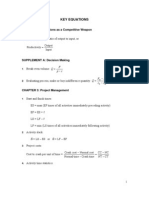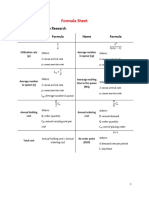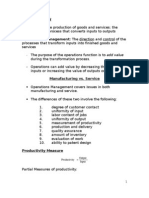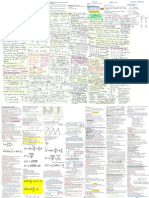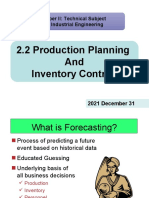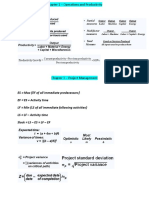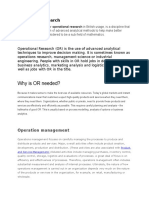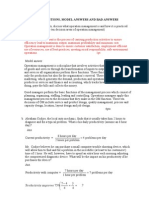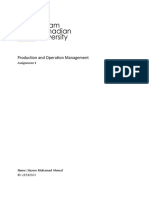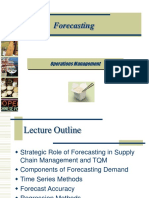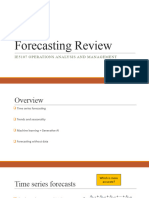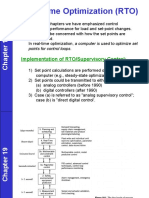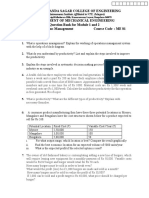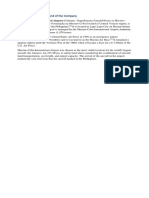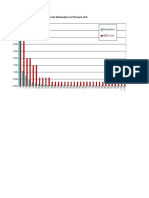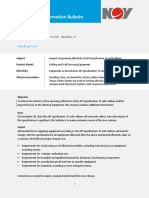0% found this document useful (0 votes)
100 views5 pagesPOM Final Formula
The document discusses several topics related to operations management including:
1) Different measures of productivity such as output per input, multifactor productivity, and total factor productivity. Productivity growth is measured as the change in productivity from the current period to the previous period.
2) Forecasting techniques including naive forecasts, moving averages, exponential smoothing, and trend analysis. Accuracy of forecasts is measured using MAD, MSE, MAPE and tracking signal.
3) Calculation of output rate, cycle time, percentage of idle time, and efficiency.
4) Statistical process control charts including X-bar charts, P charts, and C charts to monitor processes over time.
5) Economic order quantity model
Uploaded by
Shawron weevCopyright
© © All Rights Reserved
We take content rights seriously. If you suspect this is your content, claim it here.
Available Formats
Download as DOCX, PDF, TXT or read online on Scribd
0% found this document useful (0 votes)
100 views5 pagesPOM Final Formula
The document discusses several topics related to operations management including:
1) Different measures of productivity such as output per input, multifactor productivity, and total factor productivity. Productivity growth is measured as the change in productivity from the current period to the previous period.
2) Forecasting techniques including naive forecasts, moving averages, exponential smoothing, and trend analysis. Accuracy of forecasts is measured using MAD, MSE, MAPE and tracking signal.
3) Calculation of output rate, cycle time, percentage of idle time, and efficiency.
4) Statistical process control charts including X-bar charts, P charts, and C charts to monitor processes over time.
5) Economic order quantity model
Uploaded by
Shawron weevCopyright
© © All Rights Reserved
We take content rights seriously. If you suspect this is your content, claim it here.
Available Formats
Download as DOCX, PDF, TXT or read online on Scribd
/ 5





